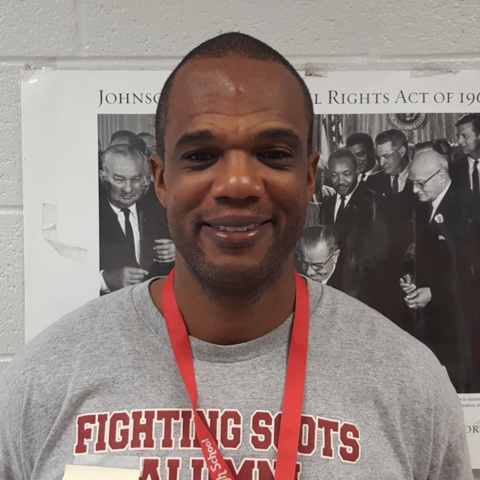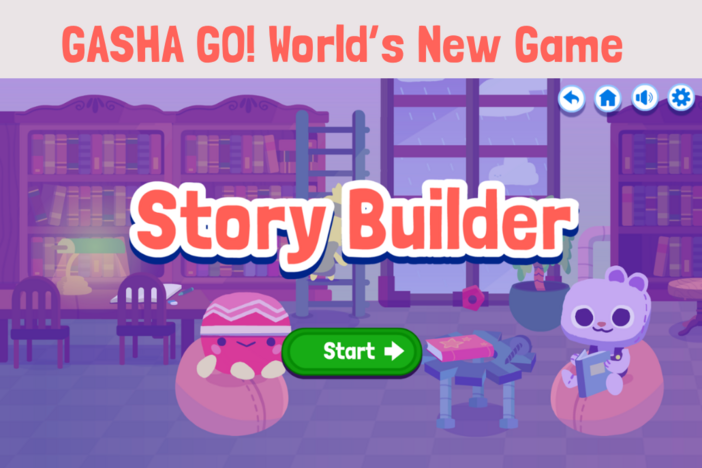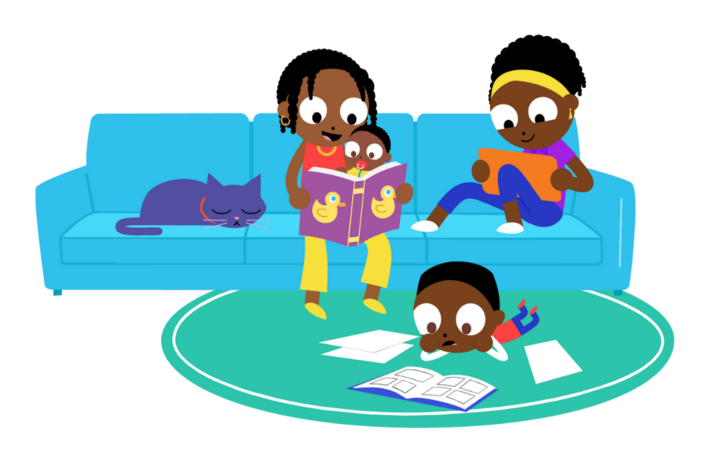
Section Branding
Header Content
The Importance Of Team Leadership During Crisis At-Home Learning
Primary Content

In the early days of our COVID-19 school shutdown, we all felt inundated. Everyone needed extra grace and understanding adapting to this reality and accepting that this is a difficult situation we have to get through.
After three early weeks of at-home teaching, we got last week off for spring break to refresh and prepare for the longer haul. As a history multi-classroom leader at Banneker High School in Fulton County Schools, I’ve been able to keep on leading my six-teacher team to do what they’ve been doing: connect with students and maintain high expectations and rigorous lessons—all with extra caring for the stress everyone is enduring.
Multi-classroom leaders (MCLs) are teachers with a record of strong student learning growth who lead a small teaching team, providing frequent, on-the-job development while continuing to teach part of the time in various ways. (I teach 81 students directly.) These roles are the foundation of the national Opportunity Culture initiative, in which MCLs take responsibility for the learning of all students in the team, and earn higher pay funded within the regular school budget.
Prior to and during our spring break week, I was able to work with the social studies department chair to help lead my team in practicing robust instruction from collaborative lesson plans.
Before we push our students ahead on that strong instruction, though, we must take the time to maintain connections and respond to their social-emotional needs.
I encourage my team teachers to chat with their students to check in on their emotions. Some of our students are very anxious and scared. So during online class time, we can’t just jump into teaching; we have to establish a rapport first with a funny story or a bit of news about our own lives—the same way we would when we greet students as they walk into the classroom. Our principal, Dr. Jason Stamper, models this for us now during our online faculty meetings, and it really does endorse the fact that we are humans with social and emotional needs that need to be addressed first.
We want to keep students connected to one another, too, and help them feel like they have a purpose. So, for example, when many students failed to show up for a class session, I asked those who did attend to each contact two other students to make sure they knew how to log on and know that we missed them.
Another practice to promote student engagement is to select a Digital Student of the Week. Each week for the past three weeks, I’ve celebrated the honored student with an email that announces them to the entire class. I also purchase and send a digital gift card with a note detailing my appreciation of their efforts. One parent called to say how much they appreciated their child’s recognition. I honestly did not think the prize was a big deal, but that phone call showed me the importance of recognition and human connection.
For now, our school expects students to get live instruction once a week in each core subject, one subject per day. I hope we can get to live classes twice a week, but I understand that we don’t want students to be overwhelmed. So our students work on assignments all week and meet live with their teachers on Thursdays for 45 to 60 minutes.
Students have multiple ways to contact me, including email or text; the district expects us to be available from 8 a.m. to 4 p.m. for quick responses to student and parents.
As we think about what may need to change for long-term at-home learning, I suggest districts and schools consider:
- Limiting the number of digital platforms. Yes, that limits teachers’ autonomy in using platforms they like, but it helps students. I have one student who had to navigate five platforms, which feels like an octopus on roller skates. Our students deserve a one-stop shop. Remember, fewer clicks equals more learning.
- Continuing to hold students accountable when possible, with some extra measures of grace. We have to spend time ensuring extensive communication with students and families. My team checks that every student has logged in every day, and they call home if not. But they understand the pressures our students are under, including unstable living situations or homelessness. Whatever happens in society is going to be multiplied in our school, so we’ve got to deal gently with students and assume they’re trying. Malcolm Gladwell talks about the need for this “default to truth”—meaning we must assume that all students are being honest and doing the best they can under the circumstances. Most students appreciate this approach and tend to improve their performance once they recognize you are supporting them holistically.
- Maintaining what works. That goes for teachers as well as student instruction. We’ve kept up our routines of team meetings three days a week and meetings of the school’s instructional leadership team. A shift to distance learning doesn’t mean reinventing everything. Focus on simple moves of what works from in-person to virtual connections. I will restart my usual routines this week of observing and coaching my team, co-teaching, modeling instruction, and leading us in student data analysis, just doing so online.
- Planning the details. How are we going to give assessments, to grade, and to keep students engaged with creative assignments?
I am taking the lead from our superintendent, area superintendent, and principal. They have “rolled up their sleeves” and provided positive leadership through this unprecedented crisis. This pandemic will really change how we operate, but I’m a glass-half-full guy: After we work our way through this shift, we are going to be better educators because of this, and I think our students will become better citizens. There’s a long way to go, of course, but our teachers are deeply committed and deeply caring, and we will get there.
Ideas from an educator on what needs to change to support long-term distance learning.





